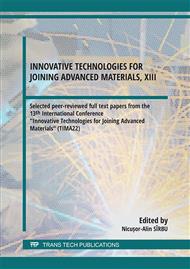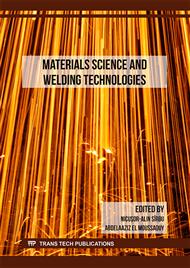[1]
S. H. Nikam and N. K. Jain, Laser-Based Repair of Damaged Dies, Molds, and Gears, in: K. Gupta (eds.), Advanced Manufacturing Technologies, Materials Forming, Machining and Tribology, Springer International Publishing AG, 2017, pp.137-159.
DOI: 10.1007/978-3-319-56099-1_6
Google Scholar
[2]
C. Chen, Y Wang, H Ou, Y He, X Tang, A review on remanufacture of dies and moulds, J. of Cleaner Production 64 (2014) 13-23.
DOI: 10.1016/j.jclepro.2013.09.014
Google Scholar
[3]
J. Bouqueta, D. Van Camp, O. Malek, P. Ten Haaf, K. Vanmeensel, B. Lauwers, Aiming for improved lifetime of die and mold components through an integrated laser hardening operation, combining machining and a selective heat treatment in one setup, Procedia CIRP 46 (2016) 541 – 544.
DOI: 10.1016/j.procir.2016.04.018
Google Scholar
[4]
B. Denkena, M.A. Dittrich, K. M. Heide, Automatic re-contouring of repair-welded tool moulds, Procedia Manufacturing 40 (2019) 45-50.
DOI: 10.1016/j.promfg.2020.02.009
Google Scholar
[5]
S. Jhavar, C.P. Paul, N.K. Jain, Causes of failure and repairing options for dies and molds: A review, Engineering Failure Analysis 34 (2013) 519-535.
DOI: 10.1016/j.engfailanal.2013.09.006
Google Scholar
[6]
N. Oliveira and A.J. Pontes, Combination of laser welding with in-mould assembling into a single process, Int. J. Materials and Product Technology, Vol. 52, Nos. 1/2, (2016) 143-161.
DOI: 10.1504/ijmpt.2016.073629
Google Scholar
[7]
D. Papageorgiou, C. Medrea, N. Kyriakou, Failure analysis of H13 working die used in plastic injection moulding, Engineering Failure Analysis 35 (2013) 355-359.
DOI: 10.1016/j.engfailanal.2013.02.028
Google Scholar
[8]
L.P. Borrego, J.T.B. Pires, J.M. Costa, J.M. Ferreira, Mould steels repaired by laser welding, Engineering Failure Analysis 16 (2009) 596–607.
DOI: 10.1016/j.engfailanal.2008.02.010
Google Scholar
[9]
M. Franz, J. Bliedtner, C. Haupt, Laser Metal Deposition Welding in the Field of Tool and Mould Making, Procedia Engineering 69 ( 2014 ) 237 – 240.
DOI: 10.1016/j.proeng.2014.02.227
Google Scholar
[10]
T. Buidos, M.P Ursu, C. Bungau, M.D. Groza, Reconditioning of the moulds' active parts by means of laser welding, Nonconventional Technologies Review – no. 3 (2010), 11-14.
Google Scholar



